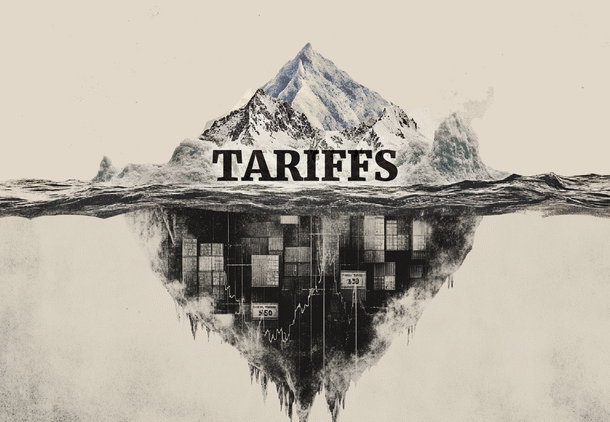
Reserve Bank of Australia (RBA) Governor Michele Bullock is addressing the press conference, explaining the reason behind unexpectedly leaving the key interest rate unchanged at 3.85% in the July policy meeting.
Bullock is responding to media questions as part of a new reporting format for the central bank that started this year.
For RBA Bullock’s press conference live stream, please follow here
Key quotes from the RBA press conference
Already cut by 50 bps effects still to flow through.
Appropriate to have cautious gradual stance on easing.
This decision was about the CPI timing rather than direction.
There was active debate in board room, difference in two camps was not about direction.
We are on an easing path, question is timing.
Can expect rates to decline if inflation slows as expected.
Policy decision will be based on our forecasts of future inflation.
Board thinks policy still little bit restrictive, but not sure.
Economic Indicator
RBA Press Conference
Following the Reserve Bank of Australia’s (RBA) economic policy decision, the Governor delivers a press conference explaining the monetary policy decision. The usual format is a roughly one-hour presser starting with prepared remarks and then opening to questions from the press. Hawkish comments tend to boost the Australian Dollar (AUD), while on the opposite, a dovish message tends to weaken it.
This section below was published at 04:30 GMT to cover the Reserve Bank of Australia’s monetary policy announcements and the initial market reaction.
The Reserve Bank of Australia (RBA) announced on Tuesday that it left the Official Cash Rate (OCR) unadjusted at 3.85% after concluding its July monetary policy meeting.
The decision surprised the market expectations of a 25 basis points (bps) cut to 3.6% .
Summary of the RBA monetary policy statement
Inflation has continued to moderate.
The board has decided to publish an unattributed record of votes in the post-meeting statement.
Today’s policy decision was made by majority; 6 in favor, 3 against.
Board will be attentive to the data and the evolving assessment of risks to guide its decisions.
The outlook remains uncertain.
The board continues to judge that the risks to inflation have become more balanced and the labour market remains strong.
While recent monthly CPI indicator data suggest that June quarter inflation is likely to be broadly in line with the forecast, they were, at the margin, slightly stronger than expected.
Board remains cautious about the outlook, particularly given the heightened level of uncertainty about both aggregate demand and supply.
The board judged that it could wait for a little more information to confirm that inflation remains on track to reach 2.5 per cent on a sustainable basis.
Monetary policy is well placed to respond decisively to international developments if they were to have material implications for activity and inflation in Australia.
Various indicators suggest that labor market conditions remain tight.
There are uncertainties regarding the lags in the effect of recent monetary policy easing.
While the final scope of US tariffs and policy responses in other countries remains unknown, financial market prices have rebounded with an expectation that the most extreme outcomes are likely to be avoided.
AUD/USD reaction to the RBA interest rate decision
The Australian Dollar jumps in an immediate reaction to the RBA’s decision. The AUD/USD pair is adding 0.74% on the day to trade at 0.6545 as of writing.
Australian Dollar PRICE Today
The table below shows the percentage change of Australian Dollar (AUD) against listed major currencies today. Australian Dollar was the strongest against the US Dollar.
| USD | EUR | GBP | JPY | CAD | AUD | NZD | CHF | |
|---|---|---|---|---|---|---|---|---|
| USD | -0.27% | -0.21% | -0.07% | -0.26% | -0.72% | -0.39% | -0.27% | |
| EUR | 0.27% | 0.07% | 0.24% | 0.02% | -0.46% | -0.12% | 0.00% | |
| GBP | 0.21% | -0.07% | 0.22% | -0.04% | -0.53% | -0.18% | -0.06% | |
| JPY | 0.07% | -0.24% | -0.22% | -0.20% | -0.67% | -0.29% | -0.11% | |
| CAD | 0.26% | -0.02% | 0.04% | 0.20% | -0.49% | -0.14% | -0.02% | |
| AUD | 0.72% | 0.46% | 0.53% | 0.67% | 0.49% | 0.34% | 0.47% | |
| NZD | 0.39% | 0.12% | 0.18% | 0.29% | 0.14% | -0.34% | 0.12% | |
| CHF | 0.27% | -0.01% | 0.06% | 0.11% | 0.02% | -0.47% | -0.12% |
The heat map shows percentage changes of major currencies against each other. The base currency is picked from the left column, while the quote currency is picked from the top row. For example, if you pick the Australian Dollar from the left column and move along the horizontal line to the US Dollar, the percentage change displayed in the box will represent AUD (base)/USD (quote).
This section below was published on July 7 at 22:45 GMT as a preview of the Reserve Bank of Australia (RBA) policy announcements.
- The Reserve Bank of Australia is expected to trim the OCR by 25 bps.
- RBA Governor Michele Bullock likely to address tariff concerns.
- The Australian Dollar could fall to fresh multi-week lows on a dovish outcome.
The Reserve Bank of Australia (RBA) is holding a monetary policy meeting on Tuesday and is set to lower the Official Cash Rate (OCR) by 25 basis points (bps) to 3.60% from 3.85%. The July monetary policy announcement will take place on Tuesday at 04:30 GMT.
The RBA will also release the monetary policy statement, a document that details policymakers’ views on current economic conditions, and an outlook detailing what they expect for the upcoming months. Finally, RBA Governor Michele Bullock will offer a press conference.
Ahead of the announcement, the Australian Dollar (AUD) weakens against its American rival, as the US Dollar (USD) gathers demand from a risk-averse environment.
Focus on RBA’s next interest rate move
Recent growth and inflation data have been softer than expected, supporting the case for a rate cut.
The Monthly Consumer Price Index (CPI) is an annualised inflation estimate, which printed at 2.1% in May, easing from the 2.4% posted in April and below the 2.3% anticipated. The Australian Bureau of Statistics (ABS) also reported that the RBA Trimmed Mean CPI grew 2.4% on an annualised basis, softer than the previous 2.8%, and the lowest level since November 2021.
At the same time, Australia reported that the economy grew by less than expected in the first quarter of the year, advancing 1.3% year-on-year (YoY) compared to the 1.5% gain anticipated. In the three months to March, the economy expanded 0.2%, half the 0.4% expected.
Softer inflation, coupled with tepid growth, supports another interest rate cut, particularly as the RBA has maintained a cautious wait-and-see stance for much longer than any other central bank.
The third leg of the equation, the labour market, has been somewhat strong. According to the latest monthly employment report released by ABS, the Unemployment Rate held steady at 4.1%. The country lost 2.5K job positions in May, albeit the big loss came from part-time jobs, down by 41.2K, while full-time positions increased by 38.7K. The labour market strength, however, is not enough to push the Board into a wait-and-see stance.
Uncertainty about tariffs adds spice to the announcement, as well as the planned trimming. At the May meeting, policymakers debated whether to cut by 25 or 50 basis points (bps), ultimately opting for the smaller reduction. Ahead of the announcement, financial markets are also considering a modest 15 bps trim.
The expected 25 bps reduction may sound encouraging for financial markets, but it does little for households. High mortgage rates have been a key factor in the slow growth, and the cautious rate cuts delivered by the RBA have done little to boost consumption.
In the meantime, market concerns revolve around US President Donald Trump’s tariffs. US Secretary Scott Bessent stated that President Trump will send letters to some trading partners, indicating that increased levies will be implemented on August 1 if there is no progress in negotiations. Bessent added he expects to see “several big announcements over the next couple of days” about trade deals.
How will the Reserve Bank of Australia decision impact AUD/USD?
Market players will be looking for RBA Governor Michele Bullock’s words on tariffs and future monetary policy decisions. Interest rate cuts are somehow conditioned by US President Trump’s tariffs, as the world fears that levies would boost inflation.
In the meantime, the AUD/USD pair trades a handful of pips above the 0.6500 mark, after falling towards 0.6482 at the beginning of the day. Easing interest rates are usually dovish and weigh on the affected currency, yet a 25 bps rate hike is fully priced in. With that in mind, the announcement itself should have a limited impact on the pair, unless the RBA goes for a larger or smaller trim. The pair could react to Bullock’s words on whatever the Board plans for the near future.
Valeria Bednarik, Chief Analyst at FXStreet, notes: “The AUD/USD pair trades with a soft tone, and regardless of the intraday bounce from fresh lows, the risk skews to the downside. Resistance comes at 0.6530, en route to the 0.6570 price zone, where sellers are likely to reappear. A slide through the intraday low exposes the 0.6440 region, while additional slides could see the pair testing the 0.6400 mark.
Bednarik adds: “Regardless of the RBA announcement and the AUD/USD pair’s initial reaction, it seems unlikely that the central bank will overshadow ongoing tariff-related concerns. Markets will return to trade on sentiment after digesting the RBA decision and quickly pricing in the next one.”
RBA FAQs
The Reserve Bank of Australia (RBA) sets interest rates and manages monetary policy for Australia. Decisions are made by a board of governors at 11 meetings a year and ad hoc emergency meetings as required. The RBA’s primary mandate is to maintain price stability, which means an inflation rate of 2-3%, but also “..to contribute to the stability of the currency, full employment, and the economic prosperity and welfare of the Australian people.” Its main tool for achieving this is by raising or lowering interest rates. Relatively high interest rates will strengthen the Australian Dollar (AUD) and vice versa. Other RBA tools include quantitative easing and tightening.
While inflation had always traditionally been thought of as a negative factor for currencies since it lowers the value of money in general, the opposite has actually been the case in modern times with the relaxation of cross-border capital controls. Moderately higher inflation now tends to lead central banks to put up their interest rates, which in turn has the effect of attracting more capital inflows from global investors seeking a lucrative place to keep their money. This increases demand for the local currency, which in the case of Australia is the Aussie Dollar.
Macroeconomic data gauges the health of an economy and can have an impact on the value of its currency. Investors prefer to invest their capital in economies that are safe and growing rather than precarious and shrinking. Greater capital inflows increase the aggregate demand and value of the domestic currency. Classic indicators, such as GDP, Manufacturing and Services PMIs, employment, and consumer sentiment surveys can influence AUD. A strong economy may encourage the Reserve Bank of Australia to put up interest rates, also supporting AUD.
Quantitative Easing (QE) is a tool used in extreme situations when lowering interest rates is not enough to restore the flow of credit in the economy. QE is the process by which the Reserve Bank of Australia (RBA) prints Australian Dollars (AUD) for the purpose of buying assets – usually government or corporate bonds – from financial institutions, thereby providing them with much-needed liquidity. QE usually results in a weaker AUD.
Quantitative tightening (QT) is the reverse of QE. It is undertaken after QE when an economic recovery is underway and inflation starts rising. Whilst in QE the Reserve Bank of Australia (RBA) purchases government and corporate bonds from financial institutions to provide them with liquidity, in QT the RBA stops buying more assets, and stops reinvesting the principal maturing on the bonds it already holds. It would be positive (or bullish) for the Australian Dollar.
Information on these pages contains forward-looking statements that involve risks and uncertainties. Markets and instruments profiled on this page are for informational purposes only and should not in any way come across as a recommendation to buy or sell in these assets. You should do your own thorough research before making any investment decisions. FXStreet does not in any way guarantee that this information is free from mistakes, errors, or material misstatements. It also does not guarantee that this information is of a timely nature. Investing in Open Markets involves a great deal of risk, including the loss of all or a portion of your investment, as well as emotional distress. All risks, losses and costs associated with investing, including total loss of principal, are your responsibility. The views and opinions expressed in this article are those of the authors and do not necessarily reflect the official policy or position of FXStreet nor its advertisers. The author will not be held responsible for information that is found at the end of links posted on this page.
If not otherwise explicitly mentioned in the body of the article, at the time of writing, the author has no position in any stock mentioned in this article and no business relationship with any company mentioned. The author has not received compensation for writing this article, other than from FXStreet.
FXStreet and the author do not provide personalized recommendations. The author makes no representations as to the accuracy, completeness, or suitability of this information. FXStreet and the author will not be liable for any errors, omissions or any losses, injuries or damages arising from this information and its display or use. Errors and omissions excepted.
The author and FXStreet are not registered investment advisors and nothing in this article is intended to be investment advice.








